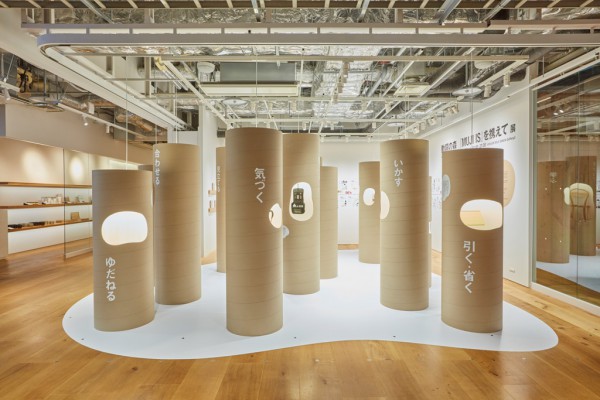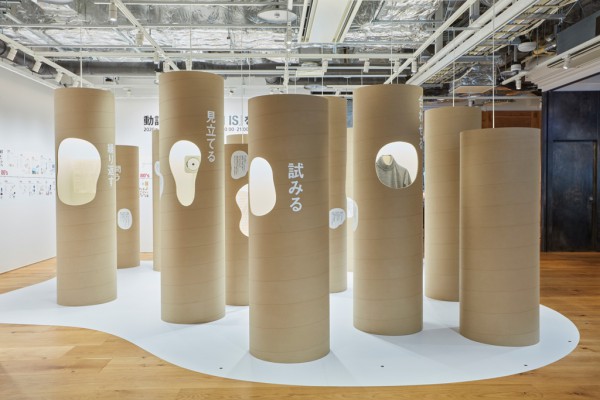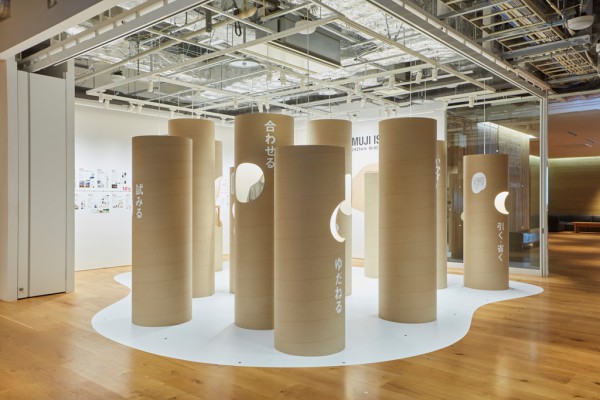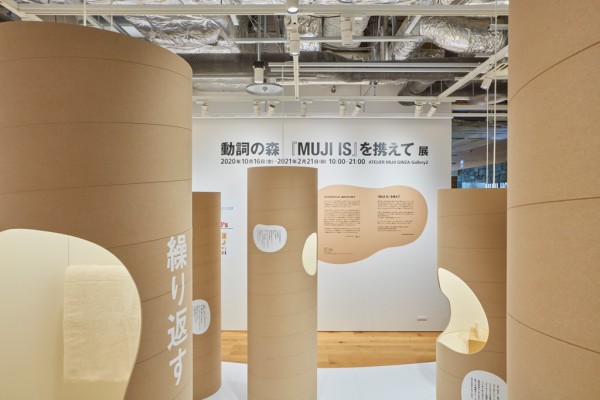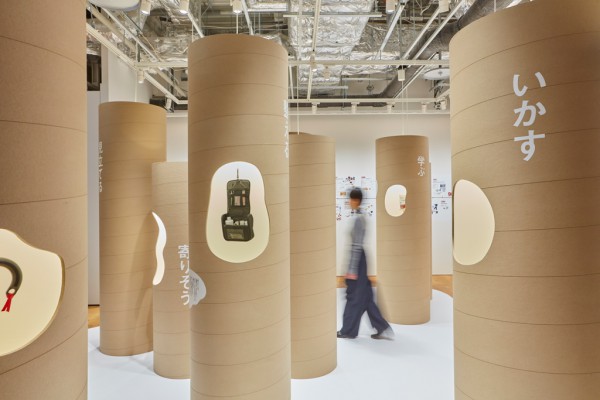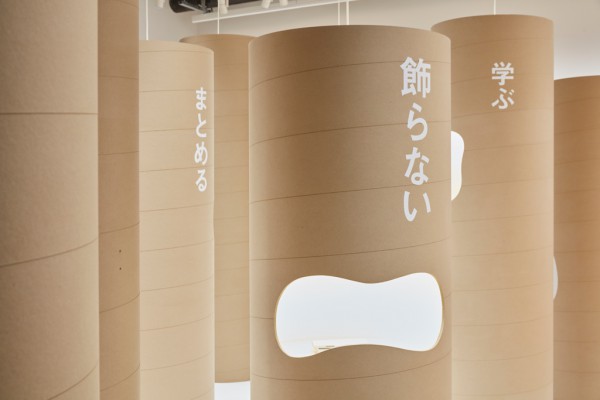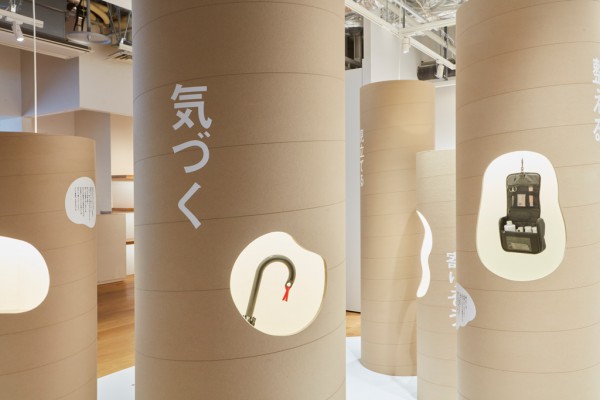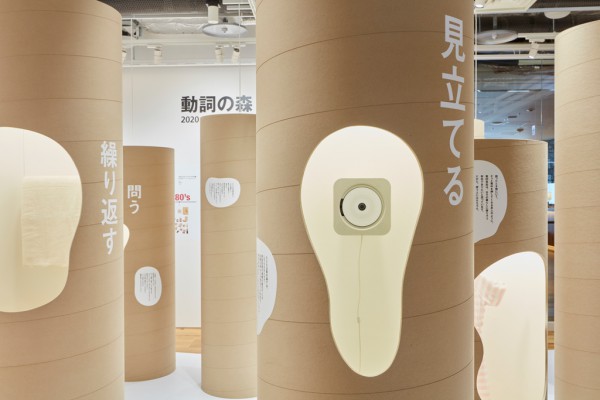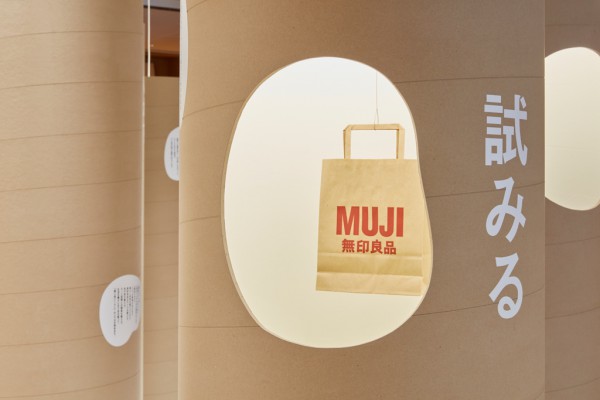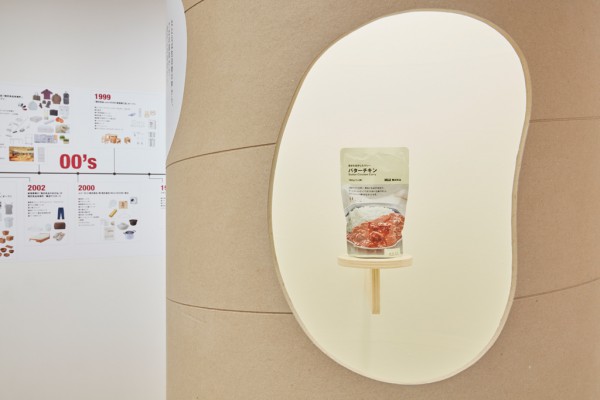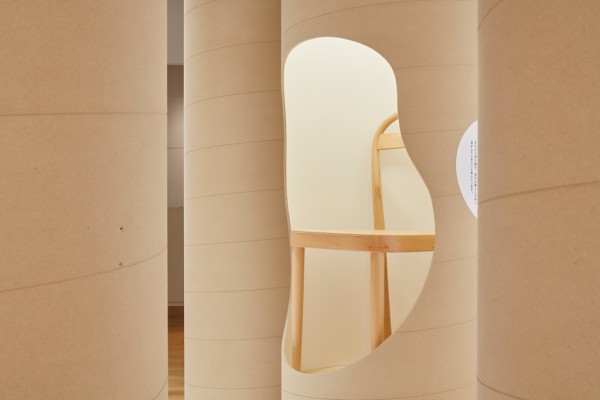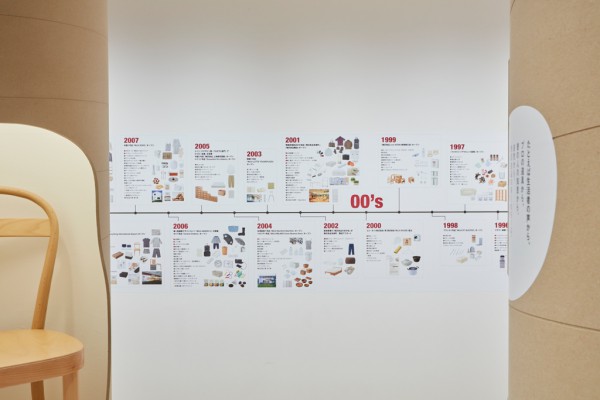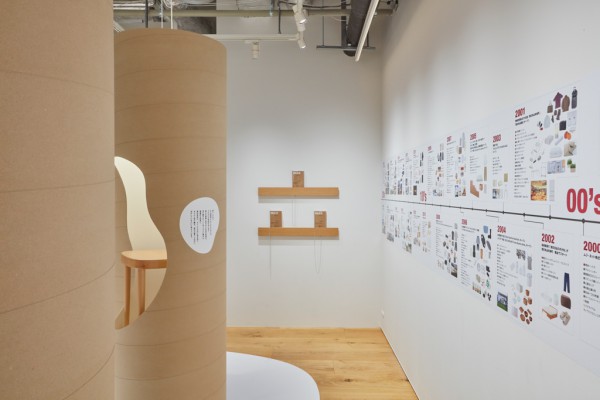主要用途: 展示会場構成
施工: 東京スタデオ
クレジット: 主催: 無印良品/企画・協力: くらしの良品研究所/キュレーション:鈴木潤子/グラフィックデザイン:倉地亜紀子/企画・運営:株式会社良品計画 生活雑貨部 企画デザイン担当・無印良品 銀座 ATELIER MUJI GINZA
所在・会場: 無印良品 銀座 6F ATELIER MUJI GINZA Gallery2
延床面積: 40m2
設計期間: 2020.07-2020.10
施工期間: 2020.10
会期: 2020.10.16-2021.2.21
写真: ©ATELIER MUJI GINZA 2020
無印良品が40周年を迎え出版した書籍『MUJI IS 無印良品アーカイブ』と連動した展示の会場構成。書籍では、多種多様な品々を商品カテゴリーで分類するのではなく、ものづくりの動機や商品への思いを、一品一品に息づく「動詞」で分類することを試みている。そこで、15の動詞とそれぞれに対応する商品を1対1で対応させ、動詞と商品が一体的に閲覧できる展示を考えた。 様々な高さに切り出された直径600mmの紙管それぞれに動詞を割り当て、それに対応する商品を紙管の中で展示する。林立した紙管を森の木々に見立て、それぞれの木に彫られたような穴をあけ、商品をフレーミングしている。白いシートで仕上げ、電球を仕込んで陰影を無くした穴の中では、光に商品が浮き上がって見える。“動詞の森”を抜けた奥の壁には40年の歴史の年表が貼られ、これまでの歩みを俯瞰することができる。陳列された商品を見せるような一方向性を避け、訪れた人が能動的に、森の木々の穴をのぞき込むようにして散策しながら、無印良品が15の動詞に託した思いや、見つめる先を感じ取れる空間を目指した。
Principle use: EXHIBITION SITE
Production: TOKYO STUDIO
Credit: Organiser: MUJI / Planning collaboration: MUJI Laboratory for Living / Curation: Junko Suzuki / Graphic design: Akiko Kurachi / Planning and Management: Household Division / Planning & Design, Ryohin Keikaku Co., Ltd. and ATELIER MUJI (MUJI GINZA)
Building site: MUJI GINZA 6F ATELIER MUJI GINZA Gallery2
Total floor area: 40m2
Design period: 2020.07-2020.10
Construction period: 2020.10
Duration: 2020.10.16-2021.2.21
Photo: ©ATELIER MUJI GINZA 2020
The exhibition space which links with “MUJI IS Mujirushi Ryohin (MUJI) archives”, a book published for MUJI’s 40th anniversary.In the book, various items are categorized by “verbs” expressing the motivation and thought process behind the product development rooted in each respective item instead of being categorized by general product categories.We planned to design the exhibition, where 15 verbs correspond to each respective item one by one to show the verb and the product integrally. The verbs are assigned to each 600 mm diameter paper tubes cut in various heights, whose insides exhibit the corresponding products. The paper tubes standing close to each other, likened to a forest, have holes like those carved in the trunk of trees. The holes highlight each product by functioning as a frame for them. These products appear to be raised up by the light in the holes finished with white sheets and lighted up with a bulb to remove any shadows. Going through the Forest of Verbs, visitors will find a 40-year-long chronological table on the back wall, which displays MUJI’s history.Instead of a unilateral way of exhibiting, such as showing products displayed on shelves, we aimed to create a space where visitors can actively feel MUJI’s thoughts and visions, which the 15 verbs express, through walking around and looking into holes of the trees in the forest.
